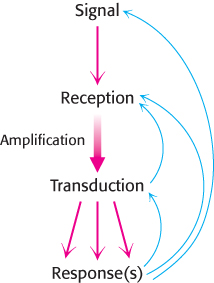
Principles of signal transduction. An environmental signal is first received by interaction with a cellular component, most often a cell-